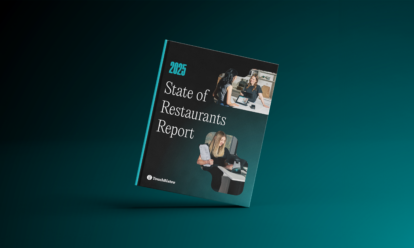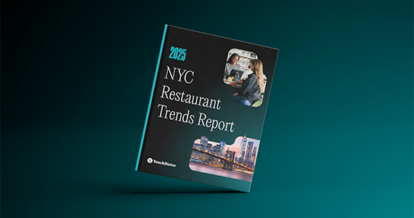As a culinary entrepreneur, you’ve got ideas for days – but you may not have the space to bring your grand plans to fruition. Even as a more established business owner, you can also run into the issue of not having enough space to deliver on your customers’ needs. If this sounds like your situation, renting a commercial commissary kitchen could be the perfect solution.
In this guide to commissary kitchens, we’ll cover:
- A commissary kitchen definition
- Who uses commercial commissary kitchens
- How commissary kitchens work
- 4 types of rentable commercial kitchens
- Benefits of renting a commercial kitchen space
- Drawbacks of renting a commercial kitchen space
Let’s get cooking!
What is a Commissary Kitchen?
A commissary kitchen is a type of commercial kitchen that you can rent, typically for an hourly rate. The kitchen rental comes with all of the equipment you’ll need to make culinary magic – that is, to test, store, prep, and cook the items on your menu!
Commissary kitchens are also known as cloud kitchens or KaaS, which is short for “kitchen as a service.” And their popularity is on the rise due to a number of factors. On the one hand, there’s been a growing consumer demand for delivery, which has an estimated annual growth rate of 8.3%. Restaurateurs are also turning to this option to keep real estate costs down by eliminating dine-in service. According to Statista, “The global cloud kitchen market size was estimated at $56.71 billion in 2021 and is forecast to reach $112.53 billion by 2027.”
Who Uses Commissary Kitchens?
Now that we’ve covered a basic commissary kitchen definition, let’s talk about who these kitchens are catered to (pun intended!) Yes, catering companies – along with other foodservice businesses like ghost kitchens (venues set up for delivery-only), food trucks, and pop-up food vendors. Even multi-unit restaurants will sometimes use commissary kitchens.
Commercial commissary kitchens appeal to different businesses for different reasons. For instance, a food truck with a small kitchen space might need more room to store and prepare extra food on busy weekends or for big events. Or, a restaurant chain might need a test kitchen where its chefs can experiment with new menu items in an environment separate from regular food service. For other businesses like catering companies and delivery-only brands, kitchen space is all they need, which makes renting a commissary kitchen a great option.

How Do Commissary Kitchens Work?
Renting a commercial commissary kitchen is a turnkey solution for restaurateurs, caterers, and other types of food businesses. The concept is simple: you can essentially show up with your ingredients and start cooking!
You’ll likely have access to a secure storage room or locked cage where you can keep your ingredients while you’re off-site. You may also have access to office space where you can manage orders and distribution for your business.
From a legal perspective, the owner of the commissary kitchen is responsible for complying with local health and safety regulations, as well as any equipment maintenance. As a tenant, you’re merely obligated to follow the rules of the space.
4 Types of Rentable Commercial Kitchens
Various types of commissary kitchens exist to serve different needs. Their size can range from 1,000 to 100,000 square feet, with the former being ideal for smaller operations like food trucks and the latter being a great fit for cloud kitchens with large orders. Let’s walk through four of the most common types of commissaries.
1. Shared Commissary Kitchens
In a shared kitchen scenario, the owner of the commercial kitchen rents it out to multiple different tenants. Each tenant pays by the hour or signs up for a membership to rent the space, similar to how a co-working space for entrepreneurs operates. This commissary kitchen in Calgary, Alberta has leaned into that concept by taking the brand name ‘Culinary Coworking.’
“With a professional, shared-use commercial kitchen, you aren’t just getting a place to cook. You’re getting a family of chefs, food producers, caterers, and other like-minded businesses to exchange advice, guide you, and build camaraderie,” says The Food Corridor.
Since all of the tenants share the kitchen’s equipment, it makes this an economical option for food business owners. However, it can mean that you get less flexibility and time in the arrangement because numerous other chefs need to use the kitchen as well.
2. Solo or Private Commissary Kitchens
With a solo or private kitchen, you get full, private access to the kitchen space. This means that while you won’t get the opportunity to network with other chefs, you will have 100% flexibility in terms of when you can use the space and its equipment. You’ll also have the privacy to test new menu items that you want to keep under wraps.
The only downside is that with this added convenience comes a higher rental cost. So, be sure to weigh the pros and cons (we’ll share more on those later) and budget accordingly.
A private commissary kitchen is an ideal choice for a multi-unit restaurant that needs a central hub to prep ingredients for distribution to its various venues. Or, this type of kitchen could work well for a food business that preps ingredients and sells them wholesale to other companies.
3. Renting a Traditional Restaurant Kitchen
Even busy establishments like restaurants have to take a break sometimes! This is good news for you, because it means that renting a restaurant’s kitchen during its off hours is a viable commissary kitchen option. It’s also more cost-effective than renting a private kitchen.
For example, a cocktail and tapas bar that’s only open from 5 p.m. onward might rent out its kitchen in the early mornings to a food truck that serves coffee and baked goods. The key with this arrangement is to find a restaurant that’s closed during the specific hours you need the kitchen.
4. Non-Traditional Commercial Kitchens
Entrepreneurs are nothing if not creative, and you may need to get creative when looking for commercial kitchen space for your food business. So, consider looking beyond traditional kitchen options.
You’ll often find that community spaces like schools and churches have commercial kitchens for rent. Take a look to see if this is the case in your local area. The advantage of going this route is that it will likely offer more availability than a traditional restaurant kitchen and may come with a lower price tag. Of course, the trade off is that it may lack some of the specialized equipment you’d find in a commercial commissary kitchen.

Pros and Cons of Commissary Kitchens
Understanding the food commissary definition and knowing the types of commissary kitchens available to you is a solid place to start. To be fully aware of what you’re getting into with a commercial kitchen rental, let’s explore the pros and cons of this business model.
Benefits of Renting a Commercial Kitchen Space
There are several advantages to using a commercial commissary kitchen, especially if you’re starting a food truck, catering business, or another new venture, and you want to wade in carefully rather than jumping into the investment with both feet.
Comes Fully Equipped
No kitchen supplies? No problem. Commissary kitchen space comes fully equipped for food prep, so you don’t have to worry about purchasing or lugging around expensive, bulky equipment. You may even be able to find a kitchen that offers specialized equipment like a clay oven to cook Tandoori dishes, for instance.
Keep in mind that you will be required to clean all equipment after you use it, and dispose of any waste as per local guidelines.
Requires Less Maintenance
Commercial kitchen maintenance can be time consuming and expensive, but it’s an essential part of running a kitchen. Fortunately, the owner or landlord of a commissary kitchen is responsible for the upkeep and maintenance of the equipment. So, you can benefit from using the space without taking on the responsibilities of ownership.
Of course, if you notice that a piece of equipment is in need of maintenance, it’s always a good idea to report it to the owner of the kitchen.
More Economical
In the food industry, profit margins are often tight, and the costs to get your business off the ground or to expand it can be significant. Saving money where you can is a smart move.
You might run the type of food business that doesn’t require you to have access to a large kitchen on a daily basis, such as a food truck that only needs to do prep work once a week or a part-time catering business that just uses a kitchen once or twice a month. In either of these cases, renting a commercial kitchen for a short period of time is a more economical option than owning a space you use infrequently.
Flexibility
You may not want to make a long-term commitment to owning or leasing a space, especially if you’re early on in your restaurant journey. Renting a commissary kitchen can help you avoid this.
It’s also an excellent option for restaurant chains that are already well-established in their own market, but that want to try setting up shop in a new location to test another market. Or, if you want to explore a new revenue stream like delivery, you can run that side of your business out of a rented kitchen in the beginning or indefinitely.
Pooled Resources
If you run a multi-unit restaurant, you can rent a commissary kitchen and use the space to share ingredients and other supplies between all of your locations. You can even integrate software into the mix that streamlines restaurant operations management between your commercial kitchen and all of your dine-in venues.
For example, with software like TouchBistro Profit Management Powered by MarginEdge, you can set up your commissary kitchen as if it’s a vendor. This allows you to create recipes and products and transfer them from the commissary location to your other restaurants, generating an order and an invoice to enable you to track inventory and costs. It makes placing, tracking, and fulfilling orders a smoother process.
Or, if you run an independent business, but share commercial kitchen space with other companies, this can open the door to mutual benefits like bulk purchasing and collaborations.
Drawbacks of Renting a Commercial Kitchen Space
Long-Term Costs
Any type of convenience comes with a price, and commissary kitchens are no exception.
“Renting a commercial kitchen ranges from $15 to $45 per hour, but pricing will ultimately be determined by a set of things: the state where you are renting, the amenities, the equipment, and the hours of the day that you are renting,” according to CKitchen.
This is worth considering if you need kitchen space on a long-term basis. Always run the numbers before you decide whether to rent, lease, or buy.
Undesirable Locations
If your heart is set on cooking out of a quaint space in the vibrant center of your city or town, you may need to adjust your expectations (or your plan). Many rentable commercial kitchens are located in warehouse-style buildings on the outskirts of urban areas, rather than in the downtown core. This is typically because food delivery services are in high demand in these less-than-walkable regions. Rent may be cheaper here as well.
While this is practical and possibly economical, it could mean you’d be spending more time commuting and transporting food to and from the kitchen.
Possible Scheduling Conflicts
Sometimes, when inspiration for your menu strikes, you need to be able to get into the kitchen – stat! That may not be the case if you decide to rent a commissary kitchen.
The reality is that when you’re sharing a commercial kitchen with other tenants, you may not always have access to the space when you need it. This can make it tough to scale your food business if you find you need to use the space frequently, but you can’t get into it due to scheduling conflicts.
Lack of Privacy
Chefs often like to keep their recipes and tricks of the trade close to the chest. In a shared kitchen, there’s no guarantee of privacy, which might be an issue if you’re working on a new recipe or technique that you’re not ready to reveal to the world.
We’ve now answered the question, “What is a commissary kitchen?” with a food commissary definition, plus four different types of kitchens you can rent. You’re prepared to go into the experience with knowledge of both the pros and cons of renting a commercial kitchen. We can’t wait to see what culinary delights you whip up!
Download our free inventory template
Sign up for our free weekly TouchBistro Newsletter







